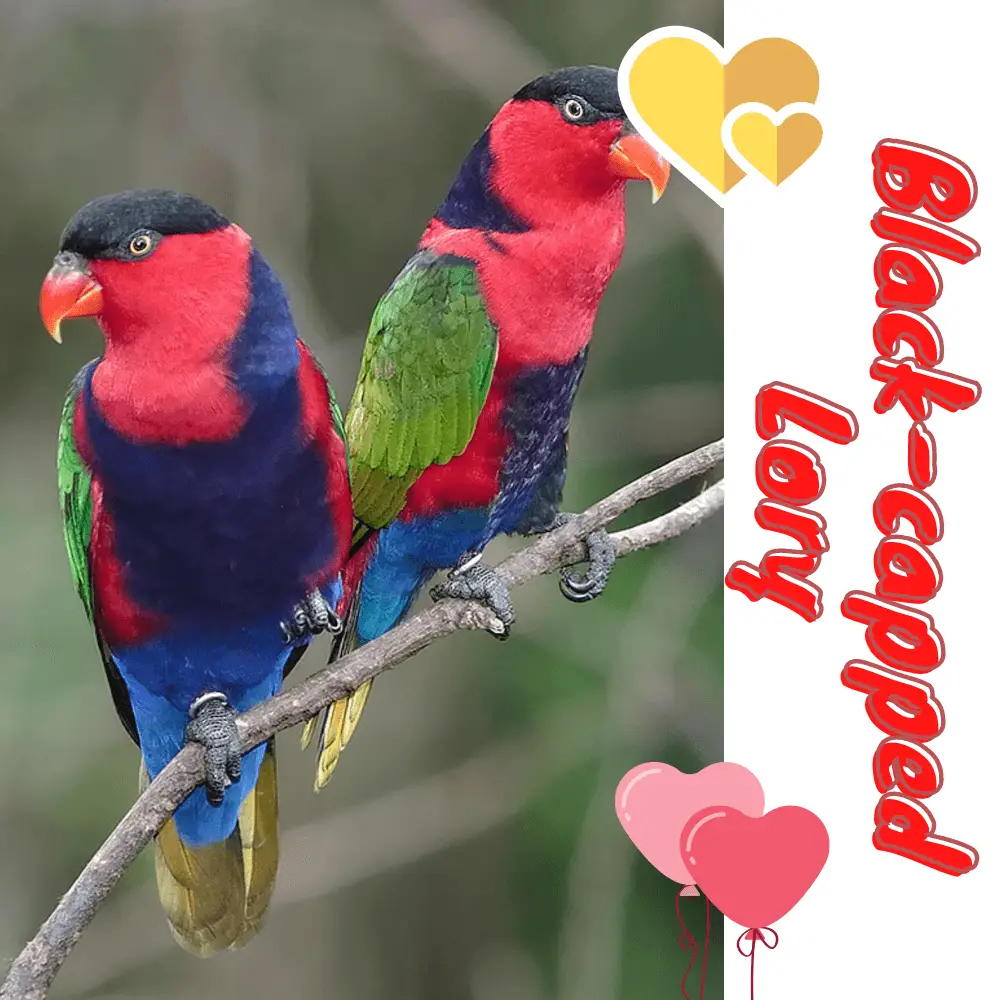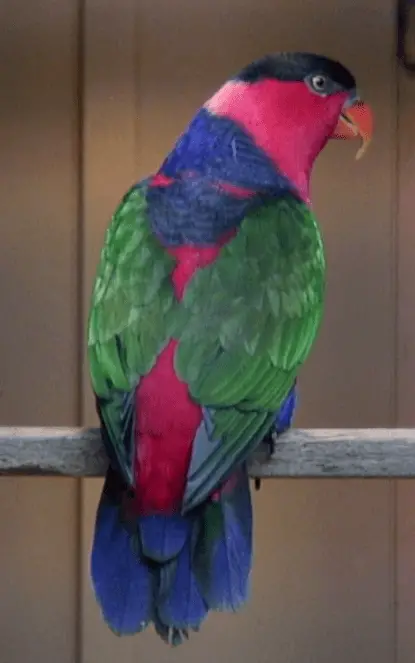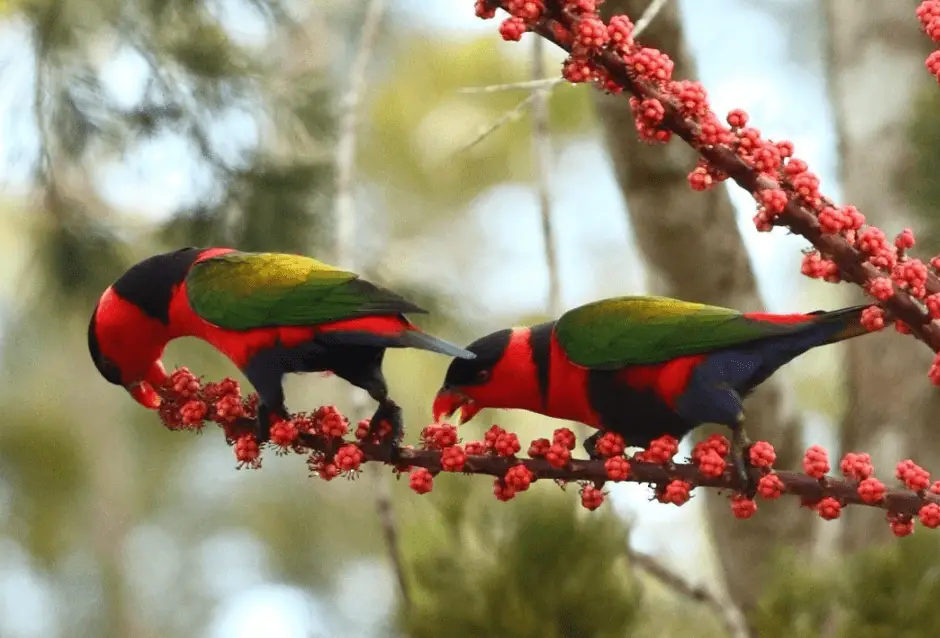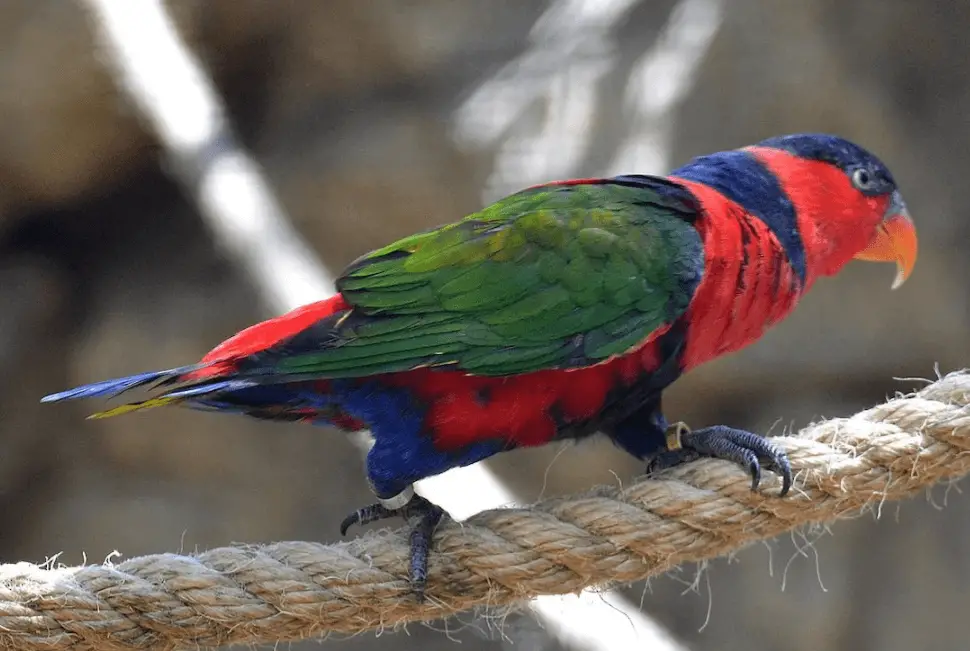
Black-capped Lory 29–33 cm; 163–260 g.Bill orange, cere black; crown above a line through eye purplish black; rest of head and throat red, shading to pink on narrow hindneck collar;
upper mantle blackish with a dark blue tinge, extending downsides of neck to join irregular blackish markings on breast, shading to purplish on the belly, thighs, and vent;
sides of breast and flanks red; underwing-coverts red bordered by a broad yellow band across the base of flight feathers, tips blackish; wings green above; tail above red, distally blue-black, below dull olive-yellow.
Immature has underwing-coverts blue. Race erythrothorax has breast red, less blue on nape; somu similar without any blue on nape; cyanuchen similar but blackish crown merges with blue nape;
Salvadori like nominate but underwing-coverts dark blue; viridicrissalis similar but darker on the nape, underwing-coverts mainly black; jobiensis like salvadorii but rosier breast, nape lighter blue.
Systematics History
Editor’s Note: This article requires further editing work to merge existing content into the appropriate Subspecies sections. Please bear with us while this update takes place.
Forms a species group with L. Garrulus, L. domicella, and L. hypoinochrous. Validity of form somu, with a very restricted range, requires investigation.
Proposed race major is considered inseparable from nominate, and rubiensis synonymized with erythrothorax. Seven subspecies were recognized.
Subspecies

Black-capped Lory
Lorius lory Scientific name definitions
Distribution
Lorius lory cyanauchen Scientific name definitions
Distribution
Lorius lory jobiensis Scientific name definitions
Distribution
Lorius lory viridicrissalis Scientific name definitions
Distribution
Lorius lory salvadorii Scientific name definitions
Distribution
Lorius lory erythrothorax Scientific name definitions
Distribution
Lorius lory somu Scientific name definitions
Distribution
Distribution
Editor’s Note: Additional distribution information for this taxon can be found in the ‘Subspecies’ article above. In the future, we will develop a range-wide distribution article.
Habitat
Lowland and hill forest, freshwater swamp and dryland forest, uncommon above 1000 m and very rarely reaching as high as 1600 m.
Movement
Relatively sedentary, although substantial movements at dawn and dusk.
Diet and Foraging
Syzygium, Freycinetia, Schefflera, and other flowers for their pollen and nectar, also fruits and small insects.

Black capped Lory Talking
Quite vocal and has an extensive repertoire of piercing or shrill whistles and screeches. Different notes are usually given with pauses of 1–2 seconds, but also in fast successions of the same note. Flight call a whistled “wheee-whuh” or similar.
Black capped Lory Breeding
May–Jul, but with Black-capped Lory nest excavation in a dead tree at the edge of native garden in Oct. No further information from wild. In captivity: two eggs, size 27 mm × 22 mm; incubation lasting 24 days; and nestling period c. 2 months.
Black Capped Lory as pet
SOURCE:ostkry
Conservation Status

Black-capped Lory
Not globally threatened. CITES II. Generally a common though not abundant bird throughout its range, with 40 birds/km² estimated in on an area of SE New Guinea.




















